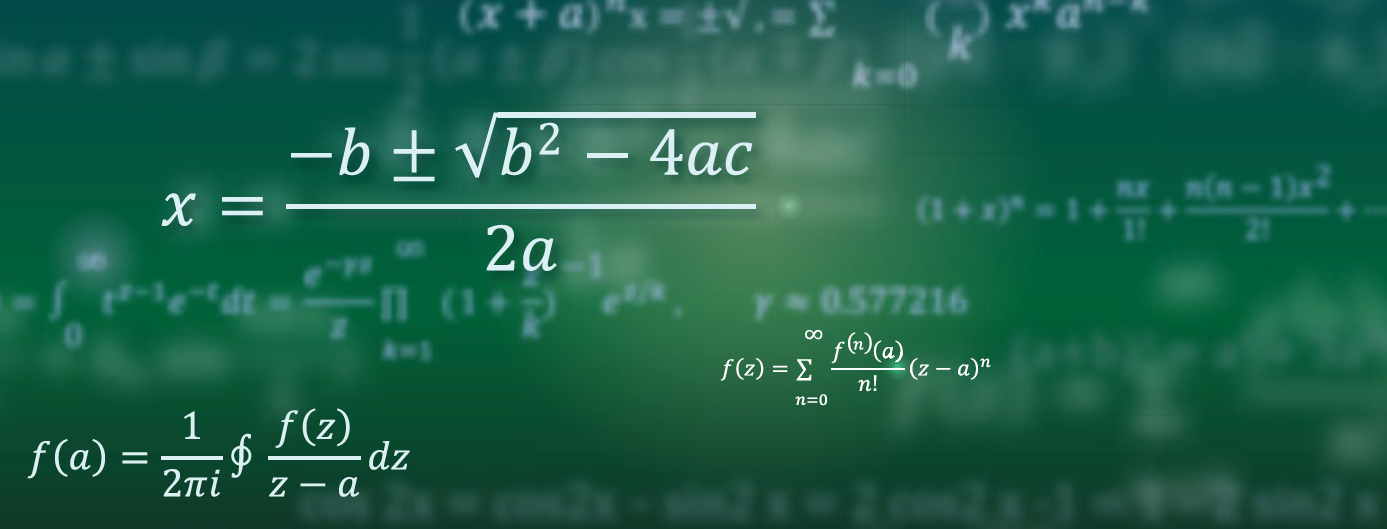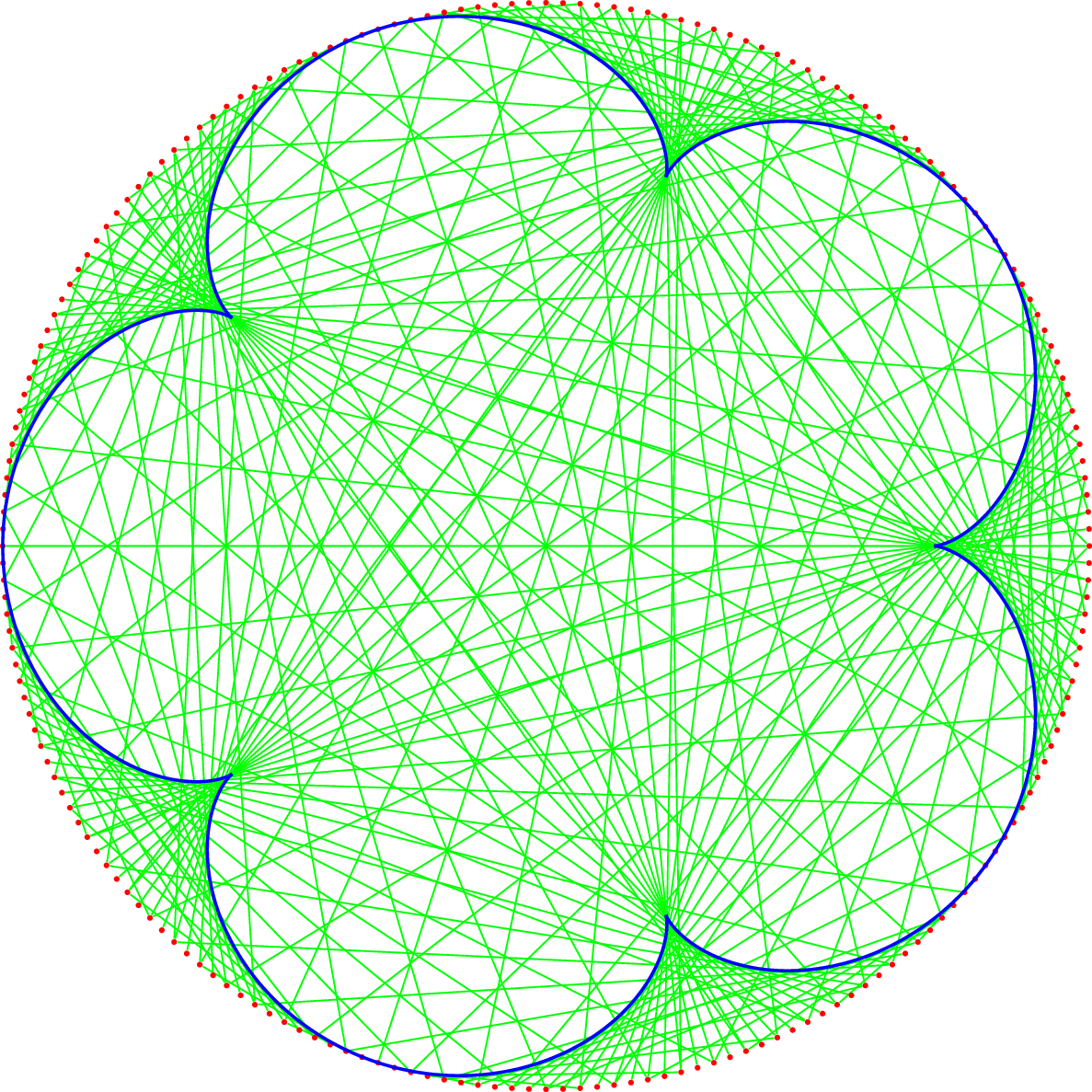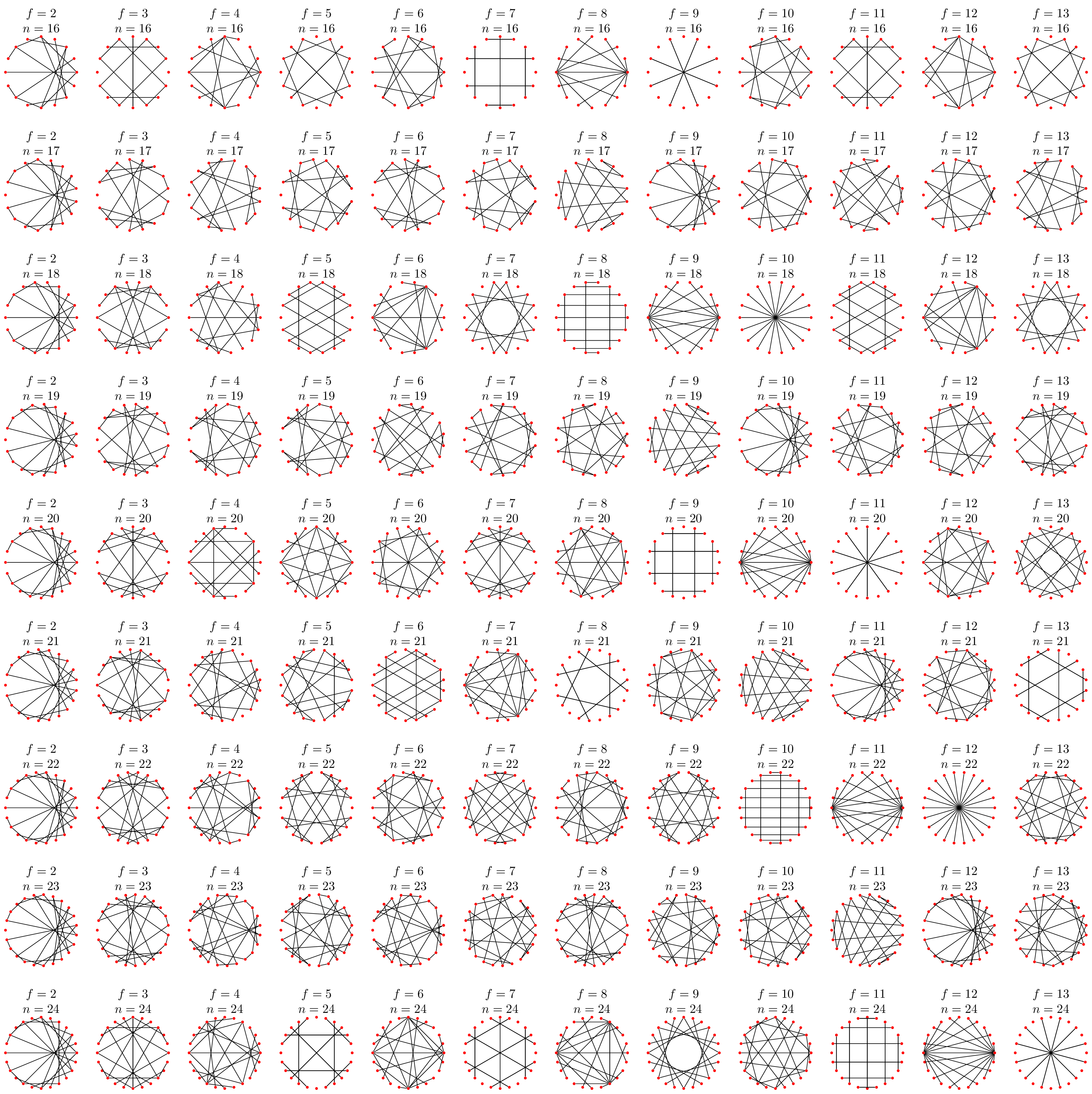Inspired by Mathologer’s video on “Times Tables, Mandelbrot and the Heart of Mathematics” this example uses the graphs library to create a circular f times table mod n.
The left-most point on the circular is labeled “0”, counter-clockwise the points 1, 2, …, n − 1 follow.
For each point i, the value j = i × f mod n will be calculated and an line between i and j will be drawn (unless i = j which needs special care in PGF/TikZ because it would otherwise issue a warning in the log).
For f = 2, the edges will visualize a Cardioid.
\documentclass[tikz]{standalone}
\usetikzlibrary{backgrounds, graphs}
\tikzgraphsset{
MandelTimes factor/.initial=2,
declare = {MandelTimesTable}{
[clockwise, phase=180] {
\foreach \V in {0,...,\pgfinteval{\tikzgraphVnum-1}}{\V},
\foreach \V in {1,...,\pgfinteval{\tikzgraphVnum-1}}{
[/utils/exec = % (V × f) mod n
\edef\pgfmathresult{\pgfinteval{\pgfintmod
{\V*(\pgfkeysvalueof{/tikz/graphs/MandelTimes factor})}
{\tikzgraphVnum}}},
parse/.expanded = { % test for = to supress warnings
\unless\ifnum\V=\pgfmathresult\space\V -- \pgfmathresult \fi}]}}}}
\begin{document}
\tikzgraphsset{% a few global settings
/pgf/declare function={
rBig(\r,\f)=\r*(\f-1)/(\f+1);
rSmall(\r,\f)=\r/(\f+1);
aSmall(\a,\f)=\a*(\f-1);},
n=200, radius=5cm}
\foreach[count=\fMinus from 1] \f in {2,...,10}{%
\begin{tikzpicture}
\path[% graph's edges should be behind nodes
execute at begin to = \pgfonlayer{background},
execute at end to = \endpgfonlayer]
graph[
edges = green,
MandelTimes factor = \f,
nodes={circle, inner sep=+0pt, fill=red, minimum size=+.5mm, as=}
] {MandelTimesTable};
\path[samples=65, domain=0:360/\fMinus, save path=\p, smooth,
rotate={isodd(\f)?180/\fMinus:0}] plot ([/utils/exec=
\pgfmathsetlengthmacro\rSmall{rSmall(5cm,\f)}%
\pgfmathsetlengthmacro\rBig{\rSmall+rBig(5cm,\f)}%
\pgfmathsetmacro\aSmall{\x-180+aSmall(\x,\f)},
shift={(\aSmall:\rSmall)}, shift={(\x:\rBig)}]0,0);
\foreach \i in {1,...,\fMinus}
\draw[blue, thick, transform canvas={rotate=360/\fMinus*\i}, use path=\p];
\end{tikzpicture}}
\tikz[
row sep=+5mm, column sep=+5mm,
execute at empty cell = {
\tikzgraphsset{
radius=1cm,
MandelTimes factor = \pgfmatrixcurrentcolumn+1,
n = \pgfinteval{\pgfmatrixcurrentrow+15}}
\node[align=center, above=\pgfkeysvalueof{/tikz/graphs/radius}]
{$ f = \pgfinteval{\pgfkeysvalueof{/tikz/graphs/MandelTimes factor}} $
\\ $ n = \tikzgraphVnum $};
\graph[nodes={circle, inner sep=+0pt, fill=red, minimum size=+.75mm, as=}]
{MandelTimesTable};}]\matrix{
& & & & & & & & & & & \\
& & & & & & & & & & & \\
& & & & & & & & & & & \\
& & & & & & & & & & & \\
& & & & & & & & & & & \\
& & & & & & & & & & & \\
& & & & & & & & & & & \\
& & & & & & & & & & & \\
& & & & & & & & & & & \\
};
\end{document}



